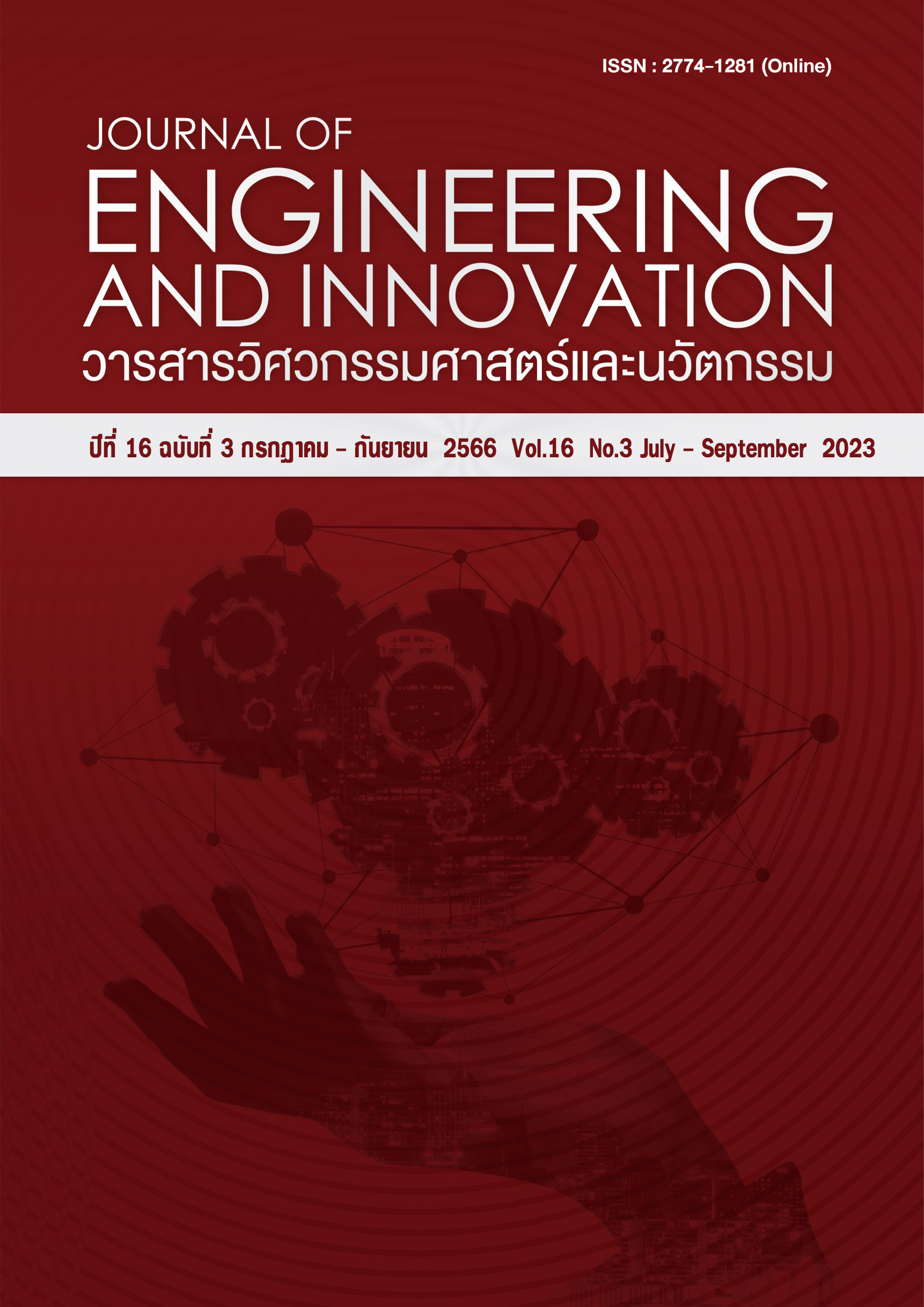Development of maintenance systems by Failure Modes and Effects Analysis (FMEA) techniques: A case study of concrete products industry
Main Article Content
Abstract
Nowadays, in industrial factories, automatic machines are increasingly used in the production process. With the main industry using automatic machinery such as the automotive industry, electronics industry Including, and the concrete products industry and is likely to be used in other industries, from the past to the present, Thailand still relies on imports of automatic machinery from foreign countries, which has a high value and is likely to increase. Continuously Which, the import of technology from abroad causes users to lack knowledge and understanding of correct use resulting in industrial automation machinery being damaged or prematurely damaged due to lack of proper maintenance. According to the study, there were frequent breakdowns in the automatic steel framing welding and automatic concrete compactors, which affected production. From the above problems and situations, this research aims to establish a maintenance system for automatic steel frame welding machines in a sample factory using the Failure Mode and Effect Analysis (FMEA) analysis. To develop a maintenance system that will be divided into structural sub-components Power, transmission equipment, Electrical equipment, and controls and support equipment. The maintenance of the system will be considered from the calculated risk by defining the strategy for the maintenance of the system into three parts: high risk, medium risk, and low risk. Strategic planning consists of autonomous maintenance, preventative maintenance, and corrective maintenance. The results showed that 1) the number of stoppages of machinery for changing the welding set decreased to 75%. 2) The number of disruption of machinery that requires more than one day of repair is reduced to 85% 3) Mean Time Between Failure (MTBF) increased to 27%, and 4) Mean Time To Repair (MTTR) reduced to 45%.
Article Details
References
Enjavimadar M, Rastegar M. Optimal reliability-centered maintenance strategy based on the failure modes and effect analysis in power distribution systems. Electric Power Systems Research. 2022;203:107647.
Baklouti A, Nguyen N, Mhenni F, Choley J-Y, Mlika A. Improved Safety Analysis Integration in a Systems Engineering Approach. Applied Sciences. 2019;9(6).
de Andrade JMM, de M. Leite AFCS, Canciglieri MB, Szejka AL, de F. R. Loures E, Canciglieri O. A multi-criteria decision tool for FMEA in the context of product development and industry 4.0. International Journal of Computer Integrated Manufacturing. 2022;35(1):36-49.
Lo H-W, Liou JJH. A novel multiple-criteria decision-making-based FMEA model for risk assessment. Applied Soft Computing. 2018;73:684-96.
Nedeliaková E, Hranický MP, Valla M. Risk identification methodology regarding the safety and quality of railway services. Production Engineering Archives. 2022;28(1):21-9.
Selim H, Yunusoglu MG, Balaman SY. A Dynamic Maintenance Planning Framework Based on Fuzzy TOPSIS and FMEA: Application in an International Food Company. Quality and Reliability Engineering International. 2016;32:795 - 804.
Filz M-A, Langner JEB, Herrmann C, Thiede S. Data-driven failure mode and effect analysis (FMEA) to enhance maintenance planning. Computers in Industry. 2021;129:103451.
Sutrisno A, Gunawan I, Tangkuman S. Modified Failure Mode and Effect Analysis (FMEA) Model for Accessing the Risk of Maintenance Waste. Procedia Manufacturing. 2015;4:23-9.
Li Y, Kang R, Ma L, Li L, editors. Application and improvement study on FMEA in the process of military equipment maintenance. The Proceedings of 2011 9th International Conference on Reliability, Maintainability and Safety; 2011 12-15 June 2011.
Battirola Filho JC, Piechnicki F, Loures EdFR, Santos EAP. Process-aware FMEA framework for failure analysis in maintenance. Journal of Manufacturing Technology Management. 2017;28(6):822-48.

